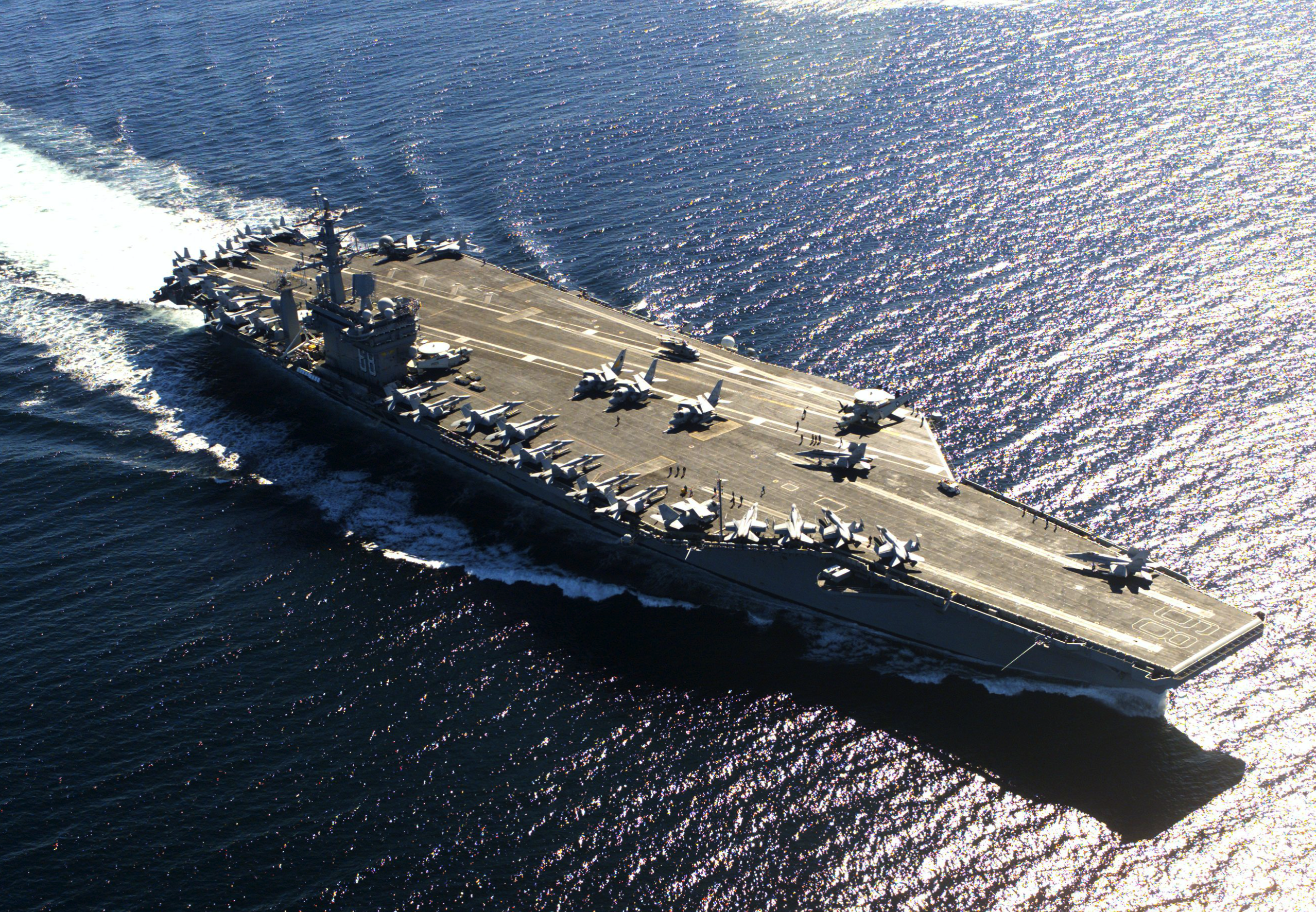Relativity 4#
Example 3: A Penny For Your Thoughts#
The Question: I keep going back to the Nimitz class aircraft because it’s about the biggest thing that moves that we’ve ever encountered.

The weight of the ship is \(W=91,4000\) tons, or a mass of \(m_N=8.3 \times 10^7\) kg…83 million kilograms. It’s speed here is \(v=30\) knots or about 34 mph or \(v=15\) m/s.
What is its kinetic energy and how does it compare to the mass-energy of a lowly penny of \(m_p=3\) grams?
The Answer:
The kinetic energy is simply: $$
\[\begin{align*}
K_N &= \frac{1}{2}m_Nv^2 \\
&=\frac{1}{2}(8.3 \times 10^7)(15^2) \\
K_N &= 9.3 \times 10^9 \text{ J}
\end{align*}\]
\[
The mass-energy of a penny of $m_p=3 \times 10^{-3}$ kg is:
\]
\[\begin{align*}
E_p &= m_pc^2 \\
&= (3 \times 10^{-3})(3 \times 10^8)^2 \\
E_p &= 27 \times 10^{13} \text{ J}
\end{align*}\]
\[
There's more energy in a penny than in the aircraft carrier's motion by a large factor:
\]
\frac{E_p}{K_N} = \frac{27 \times 10^{13}}{9.3 \times 10^9} = 30,000 \nonumber $$